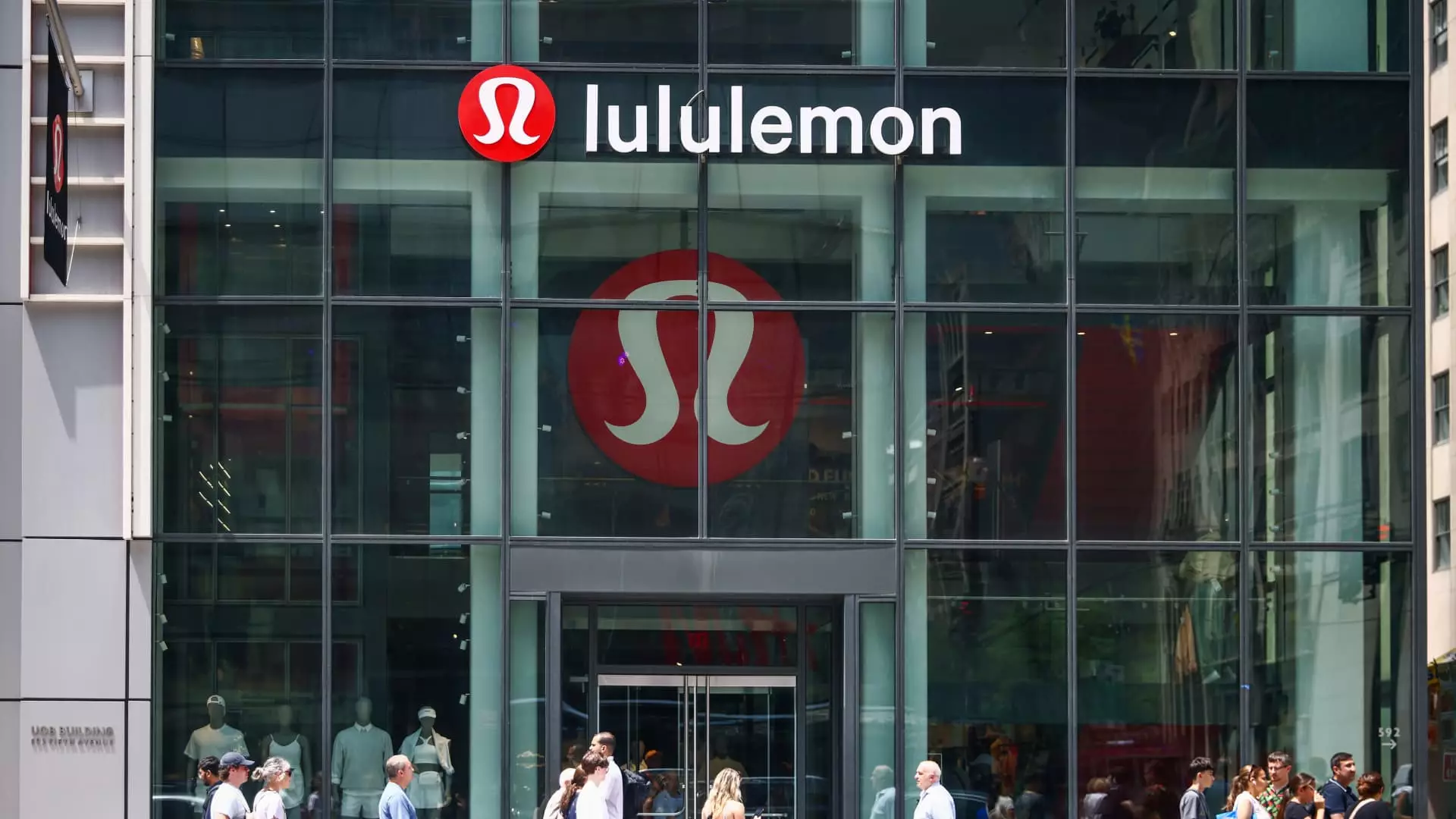Lululemon Athletica has managed to impress investors by surpassing Wall Street expectations for its fiscal fourth-quarter earnings and revenue. However, the optimism surrounding these figures swiftly evaporated when the company issued guidance for fiscal 2025 that failed to meet analyst anticipations. The ensuing stock market reaction—a plummet of over 6% during after-hours trading—signals a broader discontent that curtails any jubilation over recent successes. With so many variables at play, it raises questions about over-reliance on past successes to predict future performance.
Parsing the Numbers: Earnings vs. Expectations
In the quarter ending February 2, Lululemon reported an earnings per share (EPS) of $6.14, outstripping the expected $5.85. Revenue stood at $3.61 billion, slightly eclipsing the $3.57 billion analysts anticipated. While such metrics demonstrate short-term prowess, they mask deeper issues that could pose long-term risks. During this period, revenue growth was buoyed by a comparison to the previous year, which recorded $3.21 billion, but it’s pivotal to address the one-off nature of such comparisons. With fiscal 2024 encompassing 53 weeks instead of the usual 52, much of this growth might be superficial.
Sluggish Future Growth Signals Trouble
The real red flags appear in Lululemon’s guidance for the upcoming fiscal year. Expected first-quarter revenues of $2.34 to $2.36 billion fall beneath the $2.39 billion that analysts anticipated. More troubling is their forecast for full-year revenue in fiscal 2025, which ranges from $11.15 to $11.30 billion—again, shy of the consensus estimate of $11.31 billion. Such forecasts imply a stagnation that severely undermines confidence in the company’s growth trajectory.
Challenges of Comparable Sales and Market Performance
When scrutinizing comparable sales—which reflect revenue from e-commerce and stores open for over 12 months—Lululemon reported a modest year-over-year increase of 3%, falling woefully short of the anticipated 5.1% rise. While international sales flourished with a 20% increase, the stagnancy in Americas’ sales, which remained flat, is concerning. One has to question whether the allure of Lululemon is waning domestically. With the athleisure market saturated and competitor brands making aggressive inroads, merely relying on a successful overseas strategy may not be a sustainable method for securing market leadership.
The Price of Overconfidence
It is critical that Lululemon recalibrates its approach before the potential pitfalls become unavoidable crises. The enthusiasm embedded in a single quarter’s earnings can cloud judgment, leading a company to become complacent in innovation and responsiveness to market trends. If Lululemon continues to misread the economic signals, it risks alienating its customer base and possibly becoming just another fading star in the retail cosmos. In assessing Lululemon’s current standing and future growth potential, it becomes clear that while optimism is essential, realism is critical.

